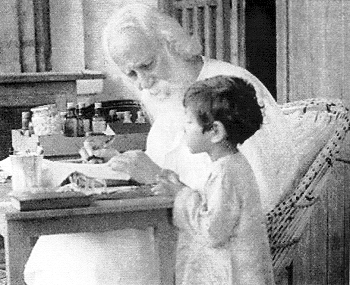Dec 31, 2025
Dec 31, 2025
Excerpts from Tagore’s Letters & Diaries.
Letter to Amiya Chakraborty, 21 June 1922
On earth there are two sects whose religions are aggressively opposed to others’, which are Christianity and Islam. Their satiety is not merely in observing their own religion, but they are at daggers drawn to others’. So, there is no means to integrate with them except by adoption of their religion. One advantage with the Christians is that they are modernists, not captives of medievalism. Religion has not engulfed their life intimately. So they do not keep others at bay with their fence of religion. European and Christian are not synonymous. ‘European Buddhist’ or ‘European Muslim’ are not self-contradictions. But ‘Muslim Buddhist’ and ‘Muslim Christian’ are impossibilities. On the other hand, Hindu as a nation is akin to Islam i.e. religion engulfs both closely. The external difference in case of the former is that their opposition to other religions is not active, theirs is ‘non-violent non-cooperation’ with all non-Hinduisms.
 A Hindu’s religion is a heritage and ritualistic and, hence, its fences are more rigid. Islam permits equating others with the Muslims which passage to Hindus is also narrow. Muslim customs do not reject other communities, where also Hindus are cautious. So, on Khilafat etc. the Hindu participation drawn by the Muslims cannot be reversed by the Hindus. Customs are the bridges for human relations where the Hindu has raised his fences at every step. When I had first engaged in my estate work, I noticed in my office that that the Muslim subjects being offered seats on the floor, removing the carpet thereon (least the carpet meant for the Hindu subjects would be defiled).
A Hindu’s religion is a heritage and ritualistic and, hence, its fences are more rigid. Islam permits equating others with the Muslims which passage to Hindus is also narrow. Muslim customs do not reject other communities, where also Hindus are cautious. So, on Khilafat etc. the Hindu participation drawn by the Muslims cannot be reversed by the Hindus. Customs are the bridges for human relations where the Hindu has raised his fences at every step. When I had first engaged in my estate work, I noticed in my office that that the Muslim subjects being offered seats on the floor, removing the carpet thereon (least the carpet meant for the Hindu subjects would be defiled).
There is no greater hurdle for combining humans than treating others’ customs as unholy. India is so fated that the two communities like Hindus and Muslims have assembled here. Resistance of Hindus is not harsh on faith, but on rites it is, whereas with Muslims it is the other way. One’s door open on one side but closed on the other juxtaposes the reverse order of the other. So, how they will combine? Once upon a time India was open to free mixture of the Greeks, Parses, Saks et al. But mind you, it was in the pre-Hindu stage.
The Hindu era has been one of reaction, when Brahmanism solidified with impenetrable walls of rituals, indifferent of the truth that if you stifle a living being foolproof, you murder it. On the whole, soon after the Buddhist era Hindus drew close the Rajputs and such aliens to solidify their protection from ‘foreign’ influence. Thus the Indians developed Hindu religion enclosed in fences, whose inherent nature is prohibition and rejection. Nowhere on earth resistances for human union has been built with such skill. This resistance is not merely between Hindu and Muslim. People like you and me, who want to preserve our freedom in pursuit of our customs, are also split up and hurdled. The problem is right here but where is the solution? It is in change in our ethos and a change in era.
The way Europe transited to modern era leaving past the medieval one through cultivation of truth and knowledge, Hindus and Muslims also must similarly set out of their boundaries. To turn religion into a sepulcher to rest the nation in post-mortem is no way to progress, neither to come close to others. If we cannot dispel the obstacles in our ethos, we shall get no liberty. We have to put right our root by education and dedication- overhaul our heredity that we should be reverent to the cage rather than our wings, only after that our welfare will follow. Integration of Hindu and Muslim is awaiting a change in era. Yet, this should not be reason for our apprehension, as in other countries man has changed time by dedication to emerge into the new era stretching their wings breaking through their egg-shells. We too shall follow suit cutting through our mental blockage; if we won’t there is no other way.
Originally published in the Bulletin (May 2010) of the Ramakrishna Mission Institute of Culture.
Translation by the author.
References and Source
The January-June 2003 issue of “Shrayan” a compilation from Tagore’s letters and diaries. by the editor of the magazine Mr. Pathik Basu.